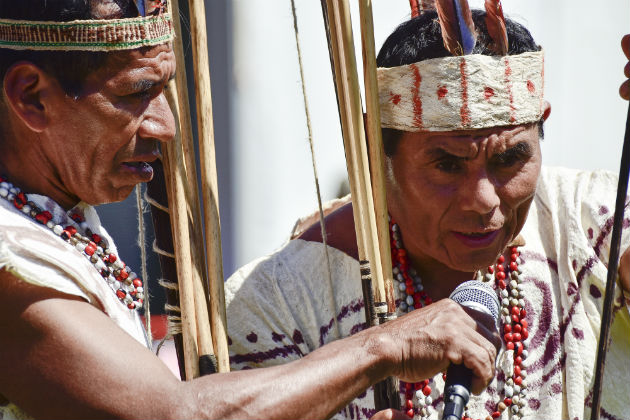Exploring with Ellie: Surveying the Skies Over Peru

During my summer as an intern at the Smithsonian Center for Folklife and Cultural Heritage in Washington, D.C., I want to soak in as much of the city as possible. On June 29, I visited the National Air and Space Museum’s Albert Einstein Planetarium. There, Festival participants from the Amazonian Wachiperi community gave a tour of the night sky as seen by Wachiperi and Inka traditions.
Most Americans think of “constellations” as linear figures drawn by connecting individual stars. We often associate them with Greek or Roman myths, but many other cultures attach their own stories to shapes they see in the night sky. For example, the group of stars known as the Big Dipper represents both Ursa Major—the “Great Bear” figure who appears in many stories from around the world—and The Drinking Gourd from American slave lore.
When I first visited the southern hemisphere, I learned about two major “landmarks” in the southern sky: the Milky Way and the Southern Cross. Even though our solar system is within the Milky Way, from Earth it appears as a foggy stripe across the sky.
The Southern Cross, or Crux, is a small constellation consisting of four stars that form an X. If you have trouble finding the Southern Cross, you can look for the two bright “Pointer Stars”—Alpha Centauri and Beta Centauri—that aim in the direction of the cross.
For the people of the Inka Empire, however, those same sky landmarks had much different meanings, many of which their descendants have maintained for centuries. What we know as the Milky Way stripe represents the Willkamayu (“Sacred River”) that runs alongside the Inka capital of Cusco.

The Wachiperi people create constellations by looking at the negative space—the dark patches inside the Willkamayu—called Yana Phuyu (“Black Clouds”). One of the most important is the Mother Llama. Her silhouetted long neck and body emerge from the darkness near the Southern Cross, and the Pointer Stars form her eyes.
Below her, attached with a thin “umbilical cord” of space, is a smaller baby llama. As the Earth rotates throughout the year, the night sky shifts. This movement of the Mother Llama marks the harvest season, until the summer solstice (in the middle of December) when her head dips into the waters of the Willkamayu to drink.
Other constellations formed by Yana Phuyu include the great serpent Macha’cuay, the partridge Yutu, and the frog Hamp’atu.
I’ve always loved learning about constellations. Their permanent presence in the night sky helps immortalize histories and beliefs from around the world, allowing us to learn about and connect with ancient communities like the Inka and incredibly remote communities like the Wachiperi.
Come meet members of the Wachiperi community for yourself at the Folklife Festival’s Perú: Pachamama program. You can also learn more about Inka astronomy at the Great Inka Road: Engineering an Empire exhibition at the National Museum of the American Indian.
Georgia “Ellie” Dassler is a media intern at the Center for Folklife and Cultural Heritage and a student at the College of William & Mary, where she studies anthropology and teaching English to speakers of other languages.

